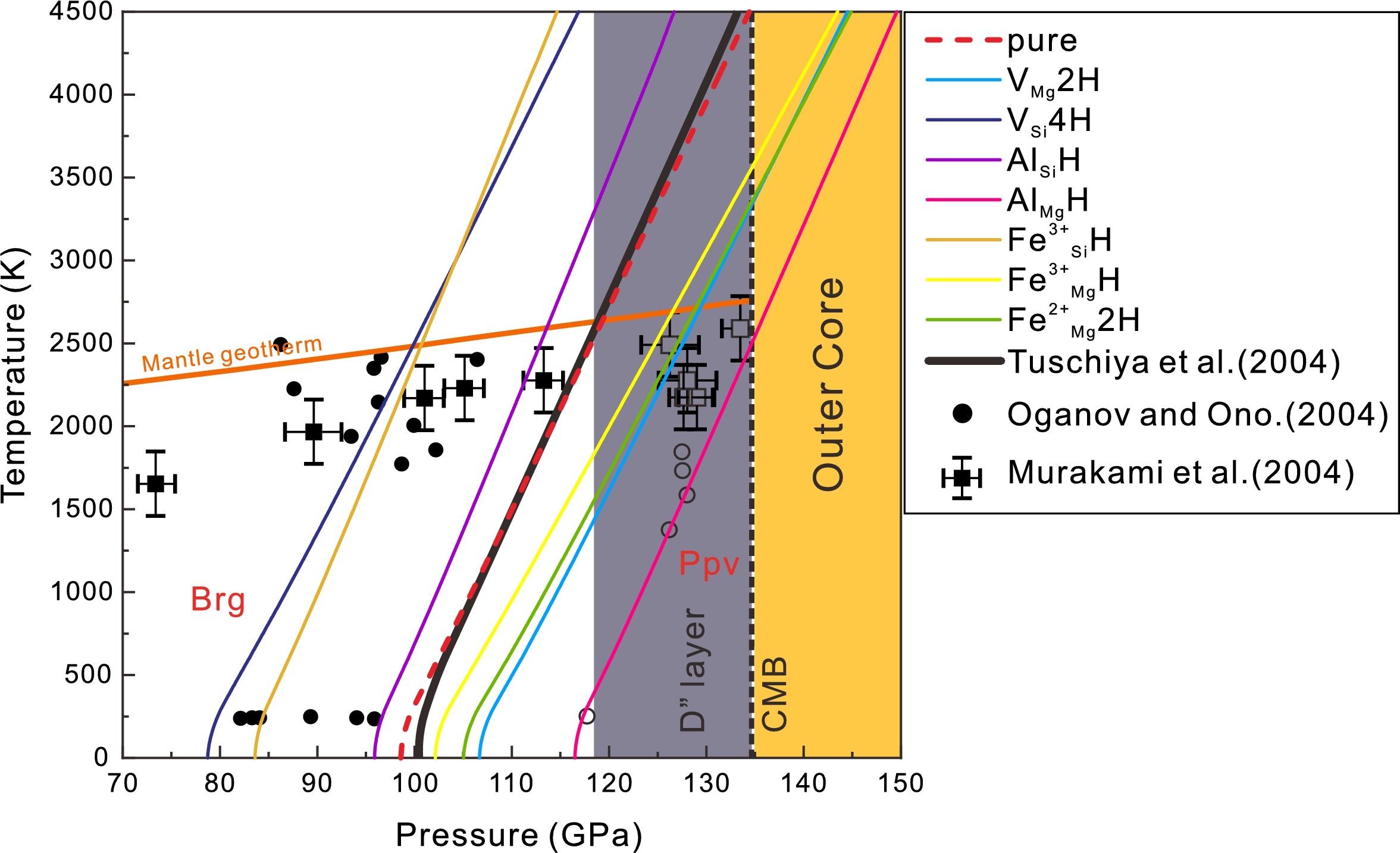The seismic discontinuity region, or called the D'' layer, above the core mantle boundary (CMB), contains strong seismic anisotropy, and is characterized by seismic discontinuity, large low-shear-velocity province (LLSVPs) and a strong variable topography.
The presence of volatiles and major elements (Al, Fe) can remarkably affect the depth of D'' layer and seismic wave velocity anomaly. The existence of volatiles such as H sheds a new light on explaining the geologic feature in D'' layer. Water can incorporate into the crystal lattice as the constitution water of nominally anhydrous minerals (NAM) in mantle. However, the water storage capacity of the lowermost mantle remains controversial due to the inconsistent estimate of the water content at the deep Earth interior.
By performing first principles calculations at the conditions of lower mantle pressures and temperatures, a research team led by Prof. ZHANG Feiwu from the Institute of Geochemistry of the Chinese Academy of Sciences (IGCAS) systematically investigated the incorporation mechanisms and elastic properties of hydrous Bridgmanite and post-Perovskite.
The results indicated that the effect of hydration on the elastic wave velocities and moduli, especially the shear velocity and the shear modulus, was more noticeable in the Fe-bearing system than that in the (Al, Fe)-free and Al-bearing systems.
In the case that coupled Fe3+ and H (0.55 wt.%) occupied Si site, the calculated shear wave anomalies were -2.9% for Bridgmanite and -3.1% for Post-perovskite, respectively, which were very close to the average anomaly value of LLSVPs. This result may imply Mg(Si1-xFex)O3Hx is likely a dominated mineral phase in LLSVPs.
The calculated P-T phase diagram suggested that the stability range of post-Perovskite was relevant to hydrogen in crystal lattice. The phase transition boundary between Bridgmanite and post-Perovskite shifted to higher or lower pressures when the hydrogen atom substituted in the Mg or Si sites in the lattice, respectively, which could explain the laterally varying thickness of D" layer.
This study was supported by the National Natural Science Foundation of China. The work titled "Theoretical studies on the hydrous lower mantle and D"layer minerals" was published in Earth and Planetary Science Letters.
|
 |
|
Figure 1. Phase boundary between Bridgmanite and post-Perovskite in various hydrogen defects (Image by IGCAS) |
|
 |
|
Figure 2. S-wave velocity contrasts caused by incorporation of Al(6.25mol%), Fe(6.25mol%) and water (Image by IGCAS) |
Contact: ZHANG Feiwu
Institute of Geochemistry, Chinese Academy of Sciences
E-mail: zhangfeiwu@mail.gyig.ac.cn
(By Prof. ZHANG Feiwu’s group)